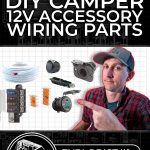
This list will show you some of the more common parts and pieces necessary to wire all of the 12V branch circuits in your camper.
Duplex wire consists of 2 separate conductors in a single sheath and will be the main type of wire you will use for your 12v Branch Circuits. Size will depend on the load and distance that the wire will need to run. The wire linked is high-quality marine-grade wire with 105° C Insulation ratings.
Triplex wire consists of 3 separate conductors in a single sheath and will be the type of wire you will want to use for 3 way switches.
For DC applications; Red is usually "Positive" and Black is usually "Negative". It's difficult to source triplex wire with the proper wire colors, so the proper way around this is to put a 1" piece of RED heat shrink on the Green and Wire wires at each end of the wire to denote that they are "Positive" wires.
Size will depend on the load and distance that the wire will need to run. The wire linked is high-quality marine-grade wire with 105° C Insulation ratings.
WAGO Lever Nuts are a great way to connect 2-5 wire together. The Wago 221 series can accept wires as big as 10 AWG and as small as 20 AWG and are rated for up to 30A.
This is a 12V Single-Pole-Single-Throw switch necessary for turning 12V circuits like lights or a water pump.
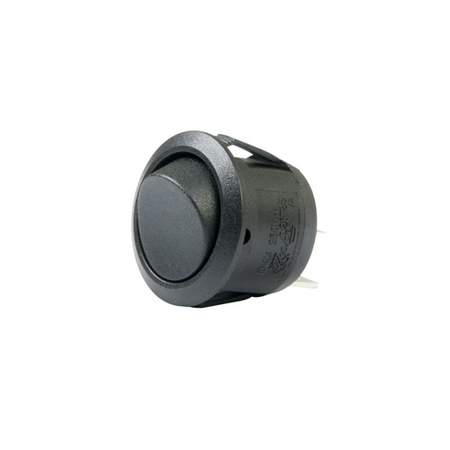
This is a 12v Single Pole Double Throw on-on switch necessary for 3-way switches a.k.a. lights that switch from 2 separate locations.
This fuse holder is used for switch panels where smaller wire is used downstream of the switch panel than upstream of the switch panel. This particular fuse holder holds 4 fuses and is, therefore, able to protect 4 circuits coming from the same switch panel location.

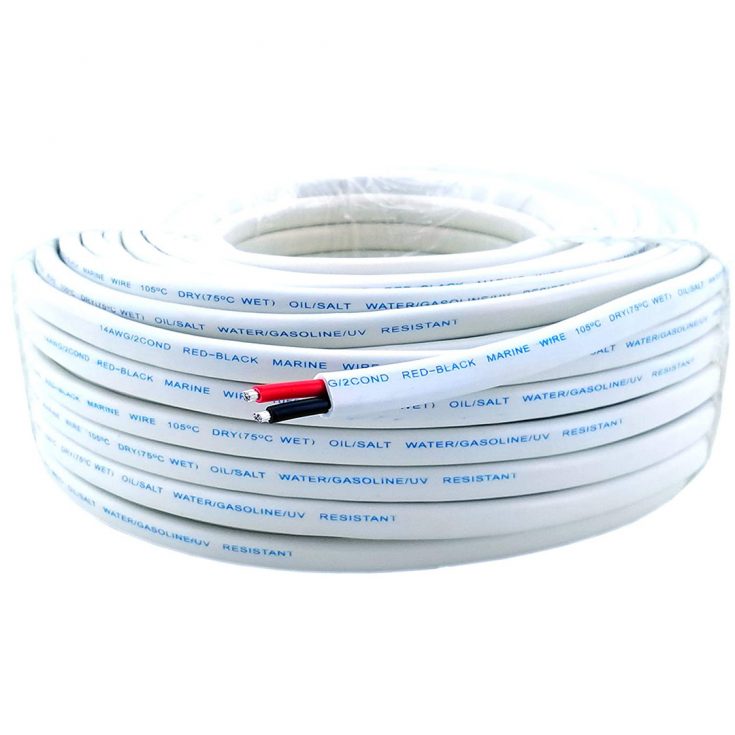
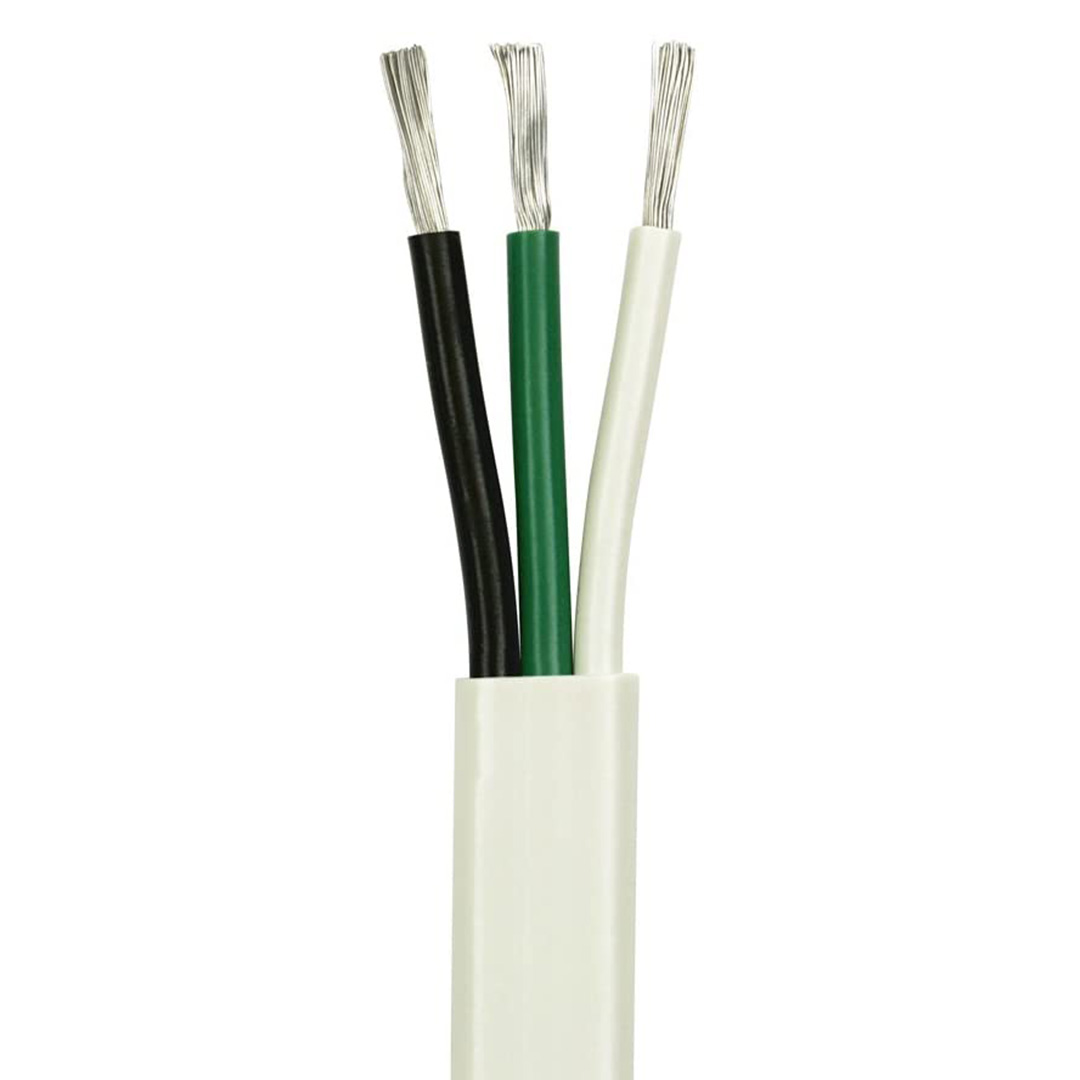
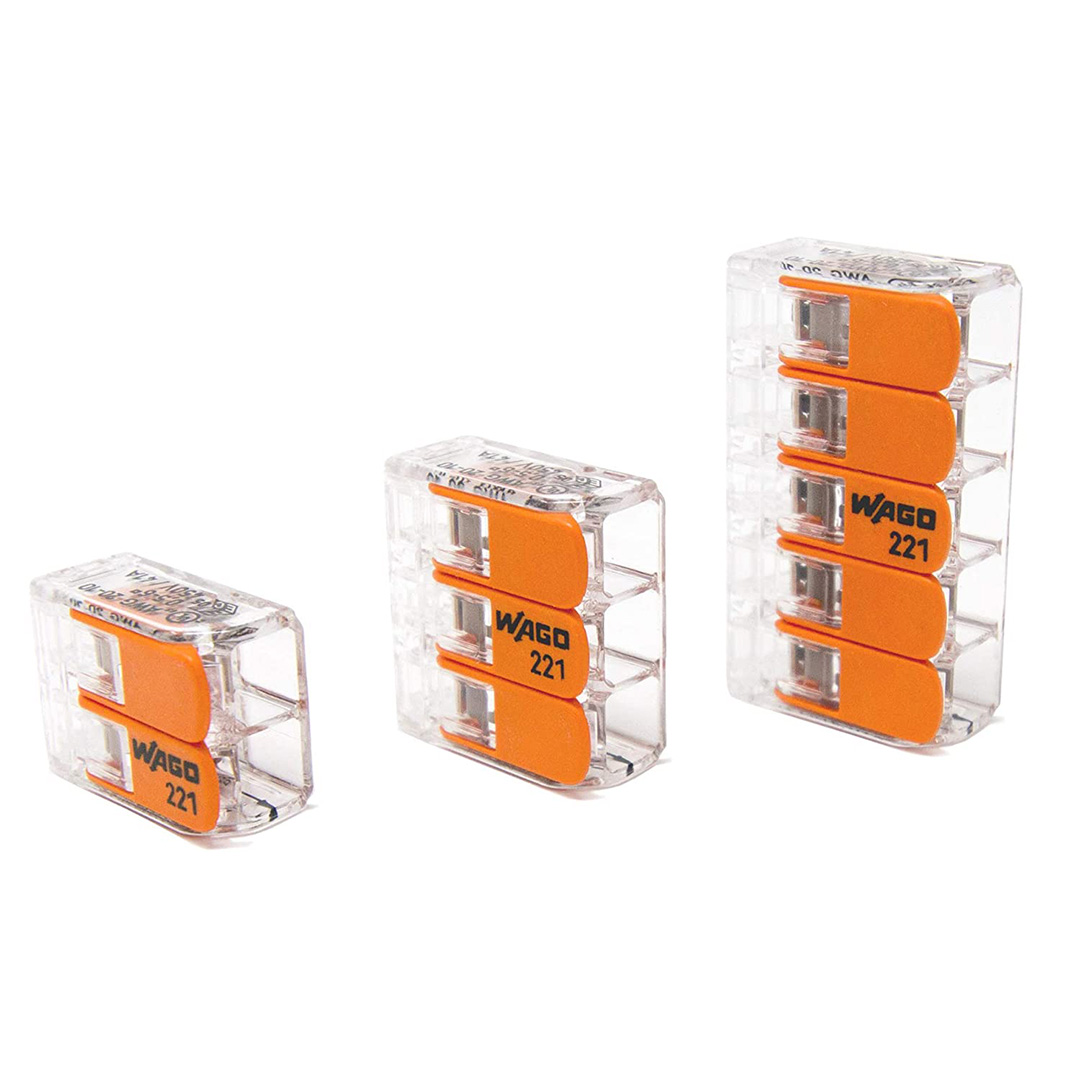

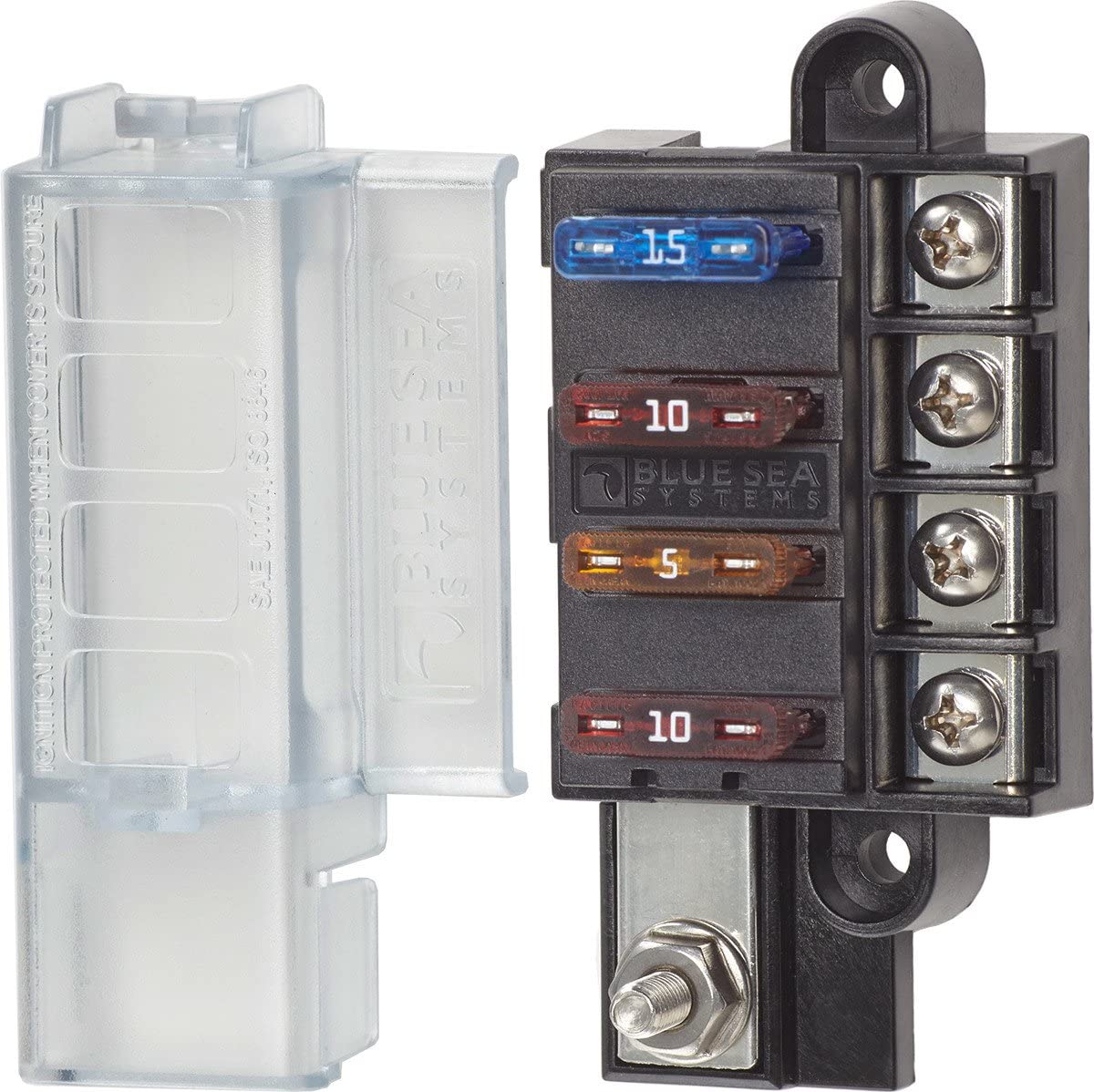


36 Responses
Hi Nate,
I’ve seen on Victron Schematics that a Smart Battery Protect 65 is installed between a Smart MPPT and Lynx DC Distributor. I understand the principle of the Smart Battery Protect between the Load and Battery but I don’t know why you would have one installed from the MPPT? I’m installing a 100/30 MPPT and Non-Lithium Batteries; is there a recommendation for the settings in VictronConnect App?
Many thanks
Ian
There’s no reason to have one between the MPPT and Lynx Distributor. If using the Victron Smart LiFePO4 batteries with external BMS, the Ve.Bus BMS can tell the MPPT that the batteries are in a ‘do not charge’ state via DVCC.
Just researching now, but great info and I’m learning a lot!
Hi Nate,
Sure would like to see a products page or YouTube covering wire management. The wire diagrams look nice and neat. I’m not sure what wire holders or wire channels to use on all the different wire sizes and wire runs so it doesn’t turn into a big pile of spaghetti. Any chance of some tips and products to help manage the wiring in a neat, organized way? You seem to be the best guy for that job.
Great idea! These are by far my favorite for 90% of wires: https://amzn.to/3EdUiT9 But proper wire management always starts with a good plan. Without a good plan and diagram, it gets out of hand in a hurry. The diagrams I have at https://www.explorist.life/solarwiringdiagrams are designed so that the parts can be laid out as shown so that the wiring can end up as shown as well.
First, thank you for doing a high resolution diagram… which I purchased bc my eyes are not what they once were. (The diagram I am using is for a 2000w inverter, 200-400ah, and 200-520 watt solar)
I am following every part exactly but have a question regarding the 2000 inverter charger. I hope to add more solar and more batteries at some point. Can I purchase a 3000 inverter charger now? I rather not be forced to repurchase in the future so what items can be used in both set ups? Have I made a mistake following this diagram rather than the 6 battery diagram?
Also I had no idea when I got into this that it would be so expensive to run the few things I want to run in my little short bus… but my goal at some point is to be able to run a roof top a.c. unit so I am trying to prepare for the inevitability of 6 batteries.
Thank you so much for your blogs posts and videos and for having a following that asks great questions of which I have also learned from.
Thank you in advance for your thoughts.
-Siva Aiken
Nope. Adding a bigger inverter means more batteries (200Ah minimum vs 400Ah minimum as well as bigger wires, lugs, fuses, etc.
Hey Nate, love your blog, really appreciate all your tips. Quick question, what’s your preferred way to make a 3-way connection, a so-called “T-junction”? (I refer to when a wire branches off from another, ie. when you’re hooking up lights in parallel.)
People talk shit online about T-Tap connectors, saying either that cut too far or too little into the surrounding insulation. Either way they’re criticized as being unreliable.
Soldering seems to be the way to go but apparently isn’t recommended as much in vehicles. This is because they have a lot of vibration. Apparently over time the ends at either end of the solder can break because the solder itself is so rigid.
Lever nuts are included in your provided diagrams, why?
Thanks, Ryan
Lever nuts are the most user-friendly and reliable option out there.
hi nate-
although it took me a couple days of thought, the solution was very simple- i had the polarity of the switches reversed. well, DUH! two of my five lights are now working and i guess i have to troubleshoot the other three. this weekend’s mini-project!
until next time…
jk
hi nate
have a question about switches
i purchased all the stuff for wiring my van through your list, carefully did the wiring. it was a tense and exciting moment when i installed the battery and turned on the power. No smoke! eureka!
i installed 5 12v plugs through the distribution box, tested them all, they all worked. installed two reading lights through the distribution box, tested them, they worked. bought a 5M light strip, cut it into five pieces, tested them all on a separate battery. they all worked. installed them with the SPST switches on your page. tried to test them. every one of them blew a fuse
WTF? any suggestions as to what i do next?
all the best
john kumiski
I saw through a later reply of yours that you were able to troubleshoot and figure it out. Nice work!
Hi Nate,
I am looking at a company that designs kits for vans based on Victron products but does not recommend or include marine grade wire. Does it really matter?
Thanks,
Sherry
I recommend marine grade wire because it has meets all of the electrical standards/codes of the ABYC, NEC, and UL 1426 for marine applications. The only difference between a boat and a camper from a wiring standpoint is that boats need to have tinned wire since they will be exposed to a salty/humid environment. I have not been able to find a non-tinned wire that meets all of those needs for smaller gauge wire like you are looking at on this page. Welding wire can be used for the larger wire (like I have speced out in my diagrams at https://www.explorist.life/solarwiringdiagrams).
If your builder is trying to use speaker wire or Romex for these wires, those are specifically forbidden by the ABYC and your builder is trying to cut corners.
@Nate Yarbrough, thank you for this comment, I had a bus builder guy tell me speaker wire was acceptable. I qm in Canada and I was wondering is the automotive wiring good? I’m so confused to which I should be using for my bus build. Can u also purchase your diagrams and use for bus. I’m assuming so but this is all new to me. Thanks
Speaker wire should not be used for anything other than speakers. If a builder says it’s fine for fans, lights, usb outlets, etc; I would very much be questioning their workmanship and knowledge about electrical systems. My systems are fine for busses, vans, expedition rigs, whatever… it’s all the same thing for the most part, just a different look.
Hi there Nate. Just went on your site after finding you on YouTube. I was hoping to buy the full system you installed for Andy Rawls, no the battery’s of course and have them shipped to Australia, don’t know if possible but would be great if you could.
Or at least buy your schematics and get information on where to purchase the parts needed collectively or separately?
No Matter, you have been more than informative on the whole solar thing best I have come across.
Regards
Hugh
Hey Hugh! Here is the blog post for that: https://www.explorist.life/diy-solar-electric-install-on-a-1976-airstream-argosy/
Hi Nate,
Thanks for all of the work you’ve put into this site. It’s an amazing resource. In the header graphic I saw some 12V vehicle accessories and I was wondering if you had experimented at all with USB-C power delivery? My goal is to have various USB-C ports hard-wired directly to the house batteries (I have a ’21 Airstream Caravel 20′) so I can fast charge my phone at 9V and serve up some 20V charging to a laptop in the same port. The inefficiency of running an inverter and wall charger (DC->AC->DC) really bothers me.
I can go into further detail about my escapades with this voltage negotiator:
https://www.amazon.com/Type-C-USB-C-charge-trigger-detector/dp/B07T6LPP9W/
But the boring solution is mounting a 12v car adapter and something like this:
https://satechi.net/products/72w-type-c-pd-car-charger-adapter?variant=29681251582040
(I did open up that Satechi car charger adapter).
Thanks!
PJ
Yeah, so… The issue I ran into is that in order to get the full 100W from a 20V PD USB 3.0… the usb outlet needed to be delivered 20V and I haven’t yet found an outlet that would boost from 12V to 20V to deliver the full 100w from PD for computers. An external dongle or booster could work, but may be more effort than it’s worth for MOST people (unless they like electrical arts & crafts).
My 12V USB diagrams and such are setup and sized for 60W @ 12v, which is the full capacity @ 12V that can be delivered through USB 3.0 PD.
Hi Nate,
I’ve got a two part question regarding using wire that’s larger than required, and using the wire from an extension cord. I have two locations where I believe I need 16 AWG wire for 8′ (16′ when counting +&-). when I around my shop I have an extra, relatively new 14 Ga outdoor extn. cord. A.) Is it a problem using slightly larger wire than is “required,” and
B.) Is it okay to try and save a few bucks with using an extension cord for a source for the extra piece of wire that you need.
Your “penurious pen pal.”
Stuart
Two things to consider…
1: Extension cord is not rated to be installed in a wall, so if that 16 AWG wire needs to be run through the wall, I cannot recommend that.
2: Extension cords usually have a lower insulation temperature rating than the marine Duplex wire shown above (and used in my calculator), so you’ll have to do your due diligence to see if it meets those specifications.
Hi Nate! If I did a longer run of AWG 12 to the location where I am installing a 12V Power Outlet Receptacle (cigarette lighter socket) and it came with an 18 AWG spades on the back, and 18 AWG wire kit with an inline 10A fuse would you use the wire that came with it (or just put a 10 A fuse in the panel? If so what is the right way to reduce to the 18 AWG size socket? If not, what is the right way to connect an AWG 12 wire to a 18 AWG Spade?
On a related note the the LED lights for in the ceiling came with hubs, that don’t seem as reliable (bouncing in van) as joints with adhesive shrink wrap. Would you recommend using the hubs or wiring directly to lights? Again, what is the right way to reduce from a 10 AWG run to an AWG 20 or 22 or so?
These little things I did not see in your videos. If I missed it or a blog entry I am sorry but please refer me!
Lever Nuts are the perfect thing to use for that and is what is shown in my 12V branch circuit guidebook.
Lever Nuts: https://amzn.to/38WCjn7
12V Branch Circuit Guidebook: https://shop.explorist.life/shop/all-products/solar-wiring-diagrams/12v-branch-circuits/
@Nate Yarbrough,
Thanks. I did go look at the Lever nuts, but I did not see any lever nuts that allowed for an AWG12 and AWG18-22 in a single lever nut. It is that reduction that I was looking for. Are you saying that information is in your guidebook?
All of the lever nuts will allow for multiple sizes of wires to be connected together. So, like these (https://amzn.to/3sB5XWK) in particular can accept 2-5 wires of sizes from anywhere from 10 AWG to 20 AWG. These (https://amzn.to/3ipC9aJ) can connect 2-5 wires ranging in size from 24-12 AWG.
Hi Nate! As always your blogs and posts are incredible, and always raise questions in my brain 🙂 So, I want to have at least 1500w of solar in my skoolie (maybe even more) I already bought 6 battleborn batteries, a 3000 Victron inverter charger, 250/100 charge controller is this enough? What else do I need? And if i want to increase the Wattage of solar is it doable with what I already have or do I need more?
The max wattage of the Smartsolar MPPT 250|100 is 1450W. So, if you want more than that, you would simply use dual charge controllers and effective create two seperate arrays on your roof. Both Charge controllers would get connected to their own slots on the lynx distributor similar to what is shown in this diagram (Just pay attention to the connection of the charge controllers… this is a 24V system, so it shouldn’t ACTUALLY be followed in your case; just an example of connecting multiple charge controllers to the system): https://www.explorist.life/24v-6000w-120v-240v-split-phase-camper-solar-wiring-diagram/
Absolutely amazing collection of information!!!
Nate, you have saved me COUNTLESS hours researching these topics!!
Here’s my ? while using the power audit I started to try to figure out the consumption for my stereo and speaker systems, starting with Deck (no external amp), and using ~ 10amp /4 ch with at 100 watts each, equals 480watts and guesstimate listening at 50% and play the system for 4 hours a day… 240w x 4hrs = 960 amp hours ??
240w / 12v = 20A
20A x 4hrs = 80 Amp Hours
Hey Nate, do those round rocker switches need need to be mounted in some sort of enclosure? Or can you just pop them into a hole?
They do not need to be in an enclosure.
I have a few questions. I love all the diagrams and this website has been so helpful. I attempted to comment earlier this week but not I can’t seem to find it so I figured I would ask again in case I forgot to submit the comment. I am building a school bus tiny house and for the most part, it has been wired on the inside (By previous owners) and I am hoping to add about 600 or 700 Watts of solar. My first question is can I wire it to 700 Watts of solar or is it recommended to be an even number of panels? I am planning on using renogy because of the available information and they are highly recommended. 2: My next question is about in inverter, on your supply list you say to get the Victron charge controller, is there another option that you would recommend that might be a bit cheaper? 3: Also, how big of a difference in power capacity between a 2000 W inverter versus a 3000 W inverter? 3: Last question, is the bus bar required for a 600 or 700 W set up? On the renogy site, their diagram doesn’t show the need for a bus bar so I was just curious
Thank you for your time and all your information on this site, I love looking around and learning more as I try and figure out my own solar system.
1: If you are using 100W panels, you should REALLY try to use either 6 or 8 panels. Using 7 panels will force you into the next tier of charge controller (250V version) which is even more expensive.
2: I recommend the Victron SmartSolar line of Charge Controllers because they are, IMO, the best performing AND (more importantly) the data that they provide within the VictronConnect app helps GREATLY when trying to make sure your system is running as it should. So, no… I do not recommend any other charge controller, but the charge controller you actually decide to use is ultimately up to you. You can always go against my recommendations if desired. 🙂
3: 2000W from a 120V outlet is 16A. 3000W from a 120V outlet is 25A. I’m not sure if that helps, but thinking about the 15A or 20A circuits in your house, this is the best metric I can provide.
4: If wiring in multiple devices like an Inverter/Charger, Charge Controller, 12V fuse block and/or Alternator charging; yes, it’s necessary. If you are only wiring in one of those devices, no it’s not necessary.
Hi Nate,
Thanks for all the great info! We recently purchased a fully gutted 78 Argosy Camper trailer that we are rebuilding with a full electrical system almost identical to the system you built for Andy Rawls. On the back drivers-side of the Argosy, there is (what I just found out) is a polarity light. I did a little research and get the gist, but still do not understand fully its purpose, but more importantly, I am wondering if I need to include this in our new wiring diagram. Are you familiar with this feature, and if so, what are your thoughts on it? Thanks so much!
I would not integrate that into the system, personally. Instead; I’d get a circuit analyzer/surge protector like this that plugs directly into the shore power pedestal: https://amzn.to/3mW8VRH